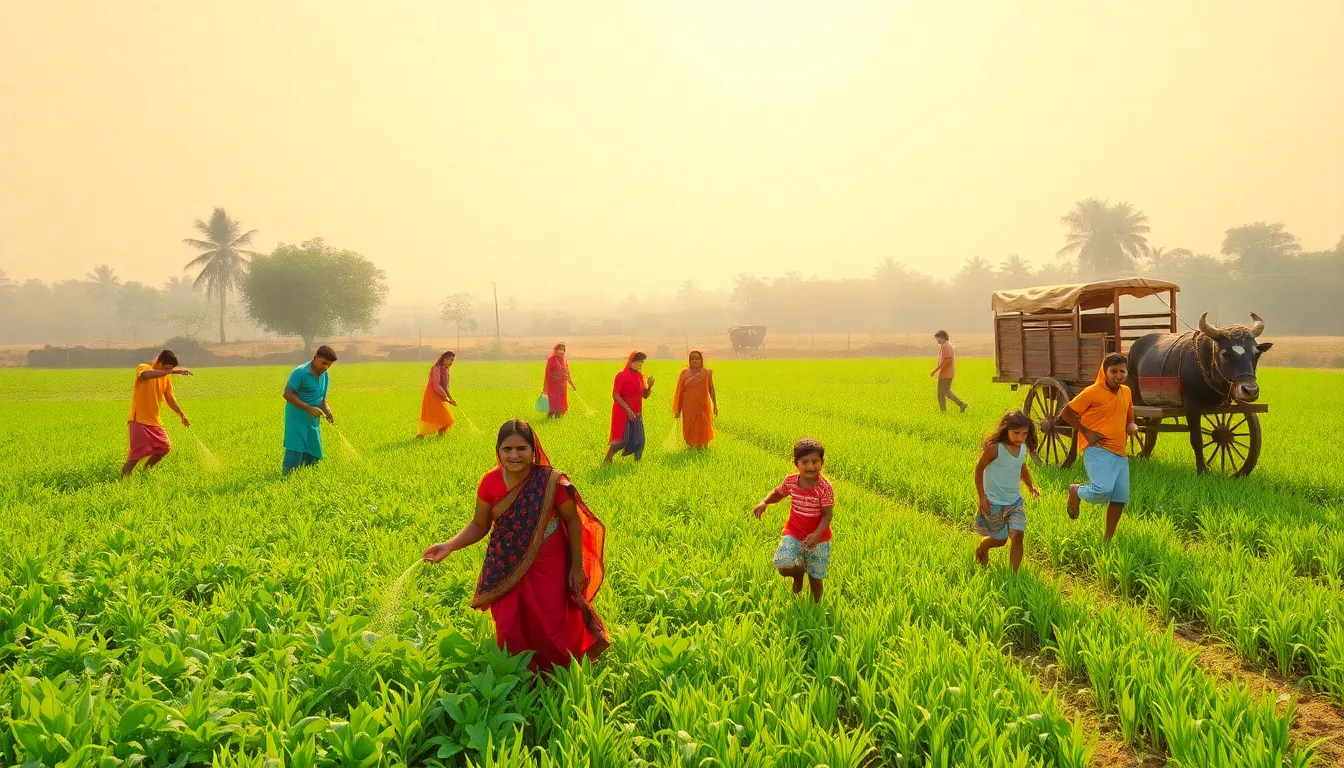Agriculture is a vital part of our lives. It provides food, jobs, and contributes to the economy. However, in recent years, we have seen troubling trends in how we approach farming. As countries develop, agriculture often takes a back seat. This is especially true in India, where the focus on industrial growth has led to many challenges in farming.
The world’s population is growing rapidly. More people mean an increased demand for food. However, while the population has surged, the amount of land available for farming has decreased. Urbanisation has encroached on fertile land, turning it into buildings and roads. This has left farmers with less space to grow crops. According to the Global Report on Food Crises 2024, around 295 million people are facing severe food insecurity. This number is expected to rise to 943 million by 2025.
In India, the situation is alarming. The country ranked 105th out of 127 nations in the 2024 Global Hunger Index. The score of 27.3 indicates a serious hunger crisis. This shows that the agricultural system in India is struggling to meet the needs of its people.
Over the past 40 years, the use of chemical fertilizers and pesticides has increased dramatically. Farmers believe these inputs are essential for higher yields. Yet, they have reduced the nutritional quality of the food produced. In 2024, India produced about 329.7 million tonnes of food grains, largely due to chemical fertilizers. However, the dependency on these chemicals has made it difficult for farmers to return to natural methods.
The Indian fertilizer market is heavily dependent on chemical fertilizers, with 85% coming from these sources. Urea, the most commonly used fertilizer, has seen a rise in usage since 2009-10. Farmers have become accustomed to these methods, often prioritizing short-term profits. While government support, such as Minimum Support Prices (MSP), seems beneficial, it hides a deeper problem. Many farmers feel trapped in a system that prioritizes quantity over quality.
Sadly, this trend has negative consequences for health. People are increasingly suffering from diseases linked to poor diets. The healthcare sector thrives on this crisis, but human lives are at stake. We must rethink our approach to agriculture.
India has made strides as an economy, now ranking as the fourth-largest globally. However, if this growth comes at the cost of food security and health, it raises questions about its sustainability. Economic success should not come at the expense of our agricultural backbone.
Currently, over 60% of India’s population relies on agriculture for their livelihood. Yet, many are unable to farm due to economic pressures. The food processing sector in India is expected to reach $535 billion by 2025-26, but most profits go to large corporations, leaving farmers struggling.
There is hope, though. The organic fertilizer market in India is projected to grow significantly. This indicates a shift towards natural farming practices. We need to support organic agriculture, providing farmers with training and financial assistance. It is crucial to connect farmers directly with markets and reduce the number of middlemen.
In conclusion, we must return to sustainable farming practices. This means prioritizing health, nutrition, and the environment. Only then can we truly achieve economic growth that benefits all. It is time to make agriculture a central part of our development journey.
Let us advocate for a balanced approach that values both productivity and the health of our people. This is not just about farming; it is about building a sustainable future for everyone.

